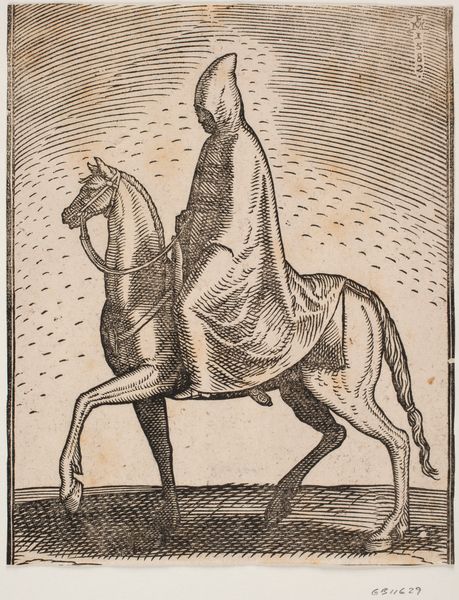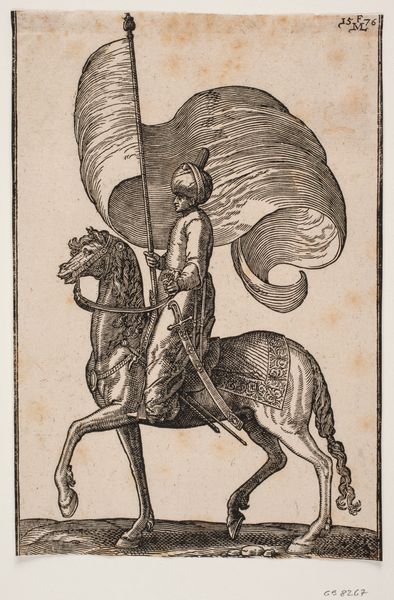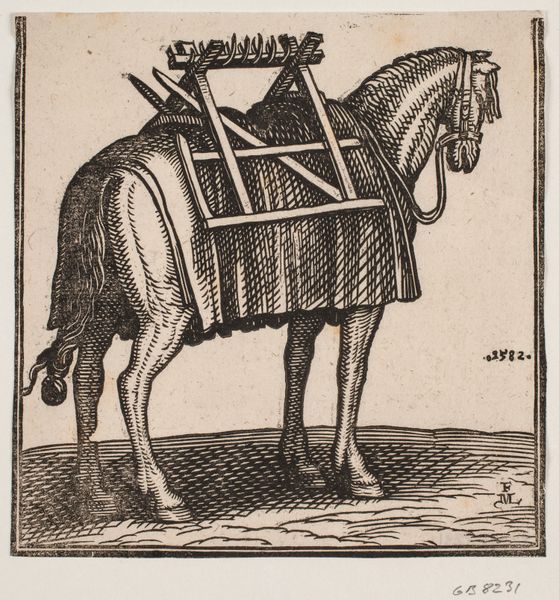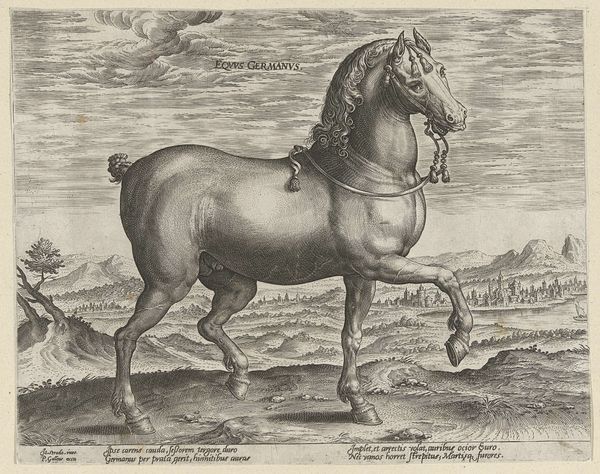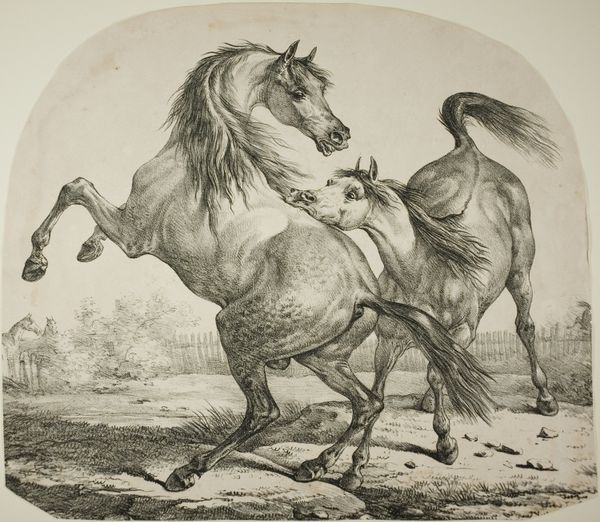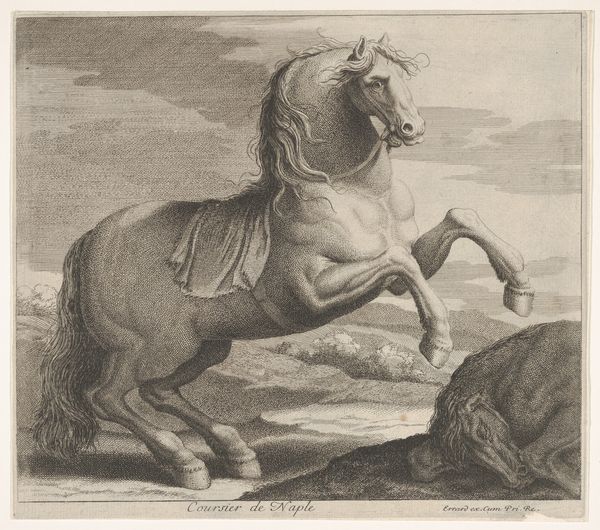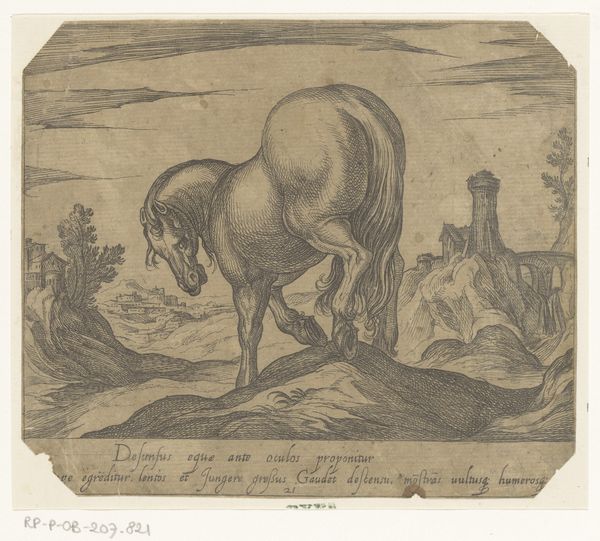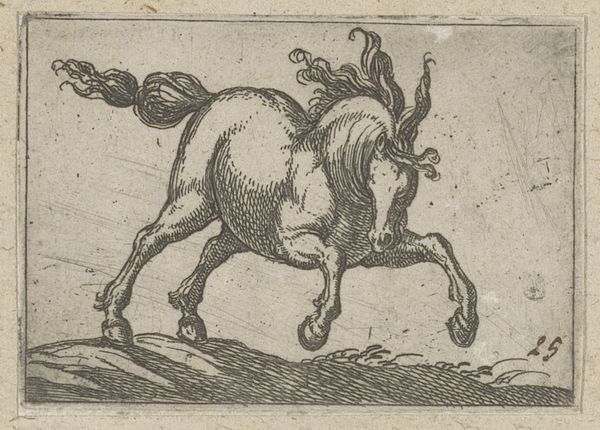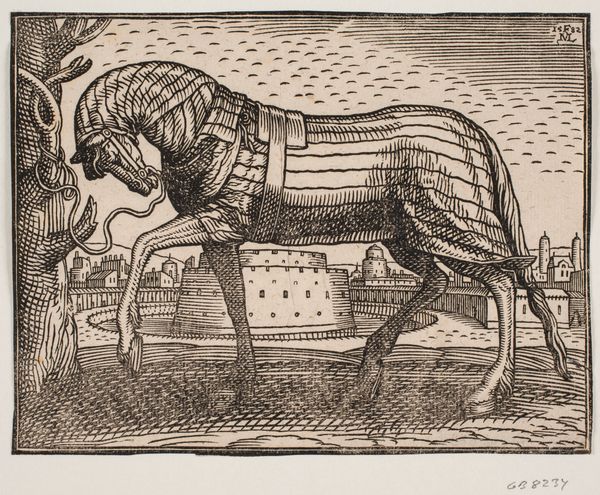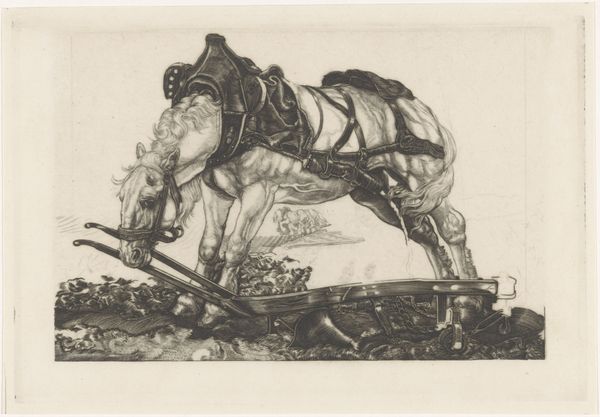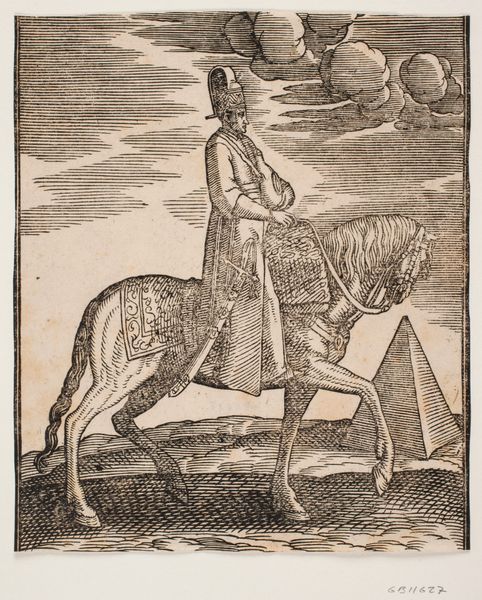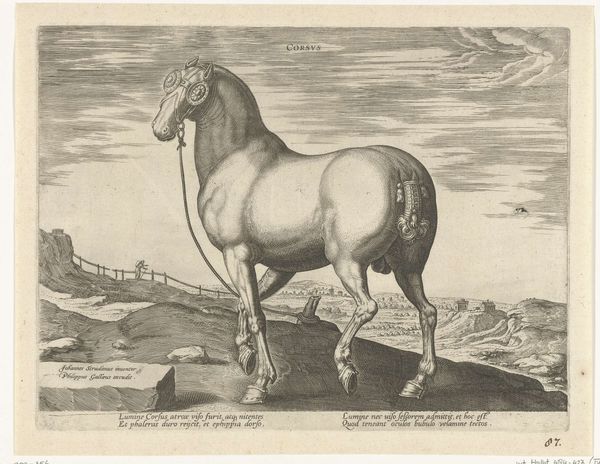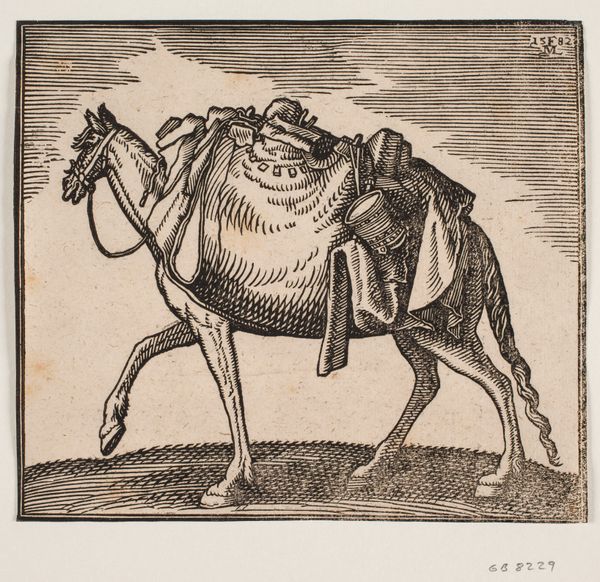
Elegant opsadlet hest, tøjret ved v. indramningslinje, profil mod v.; under hestens bug ses en ruineret 1582
0:00
0:00
print, woodcut
#
animal
# print
#
landscape
#
woodcut
#
northern-renaissance
Dimensions: 141 mm (height) x 168 mm (width) (bladmaal)
Editor: This woodcut, "Elegant opsadlet hest…" by Melchior Lorck from 1582, features a saddled horse next to what looks like a ruined pillar. I'm really struck by the detail of the horse's tack versus the starkness of the surrounding landscape. How do you interpret the relationship between these elements? Curator: It's fascinating to consider the socio-political implications. During the Renaissance, imagery of horses often symbolized power, nobility, and military strength. The meticulous depiction of the horse's tack and the ruined pillar suggest contrasting ideas. Editor: So, the pillar represents decline? Curator: Perhaps. Or maybe it’s a deliberate contrast—the horse as an active symbol of power posed against the crumbling remnants of an old order. Consider the public role of art at this time: who was this image meant for? Did Lorck intend a commentary on the changing political landscape of 16th-century Europe? Editor: That makes sense. So, the "elegance" of the horse, the saddlery and all, is there for a purpose, right? It wasn't just a nice drawing. Curator: Exactly. The detail highlights its importance. Look closely, too, at how the print itself becomes a vehicle for communicating ideas about power and perhaps, the ephemerality of earthly empires. What do you make of the positioning of the horse? Editor: It's not static. It's caught mid-stride. It gives the animal life! Almost as if a portrait was meant to be "alive." I hadn't considered that before. Curator: Precisely. Think about the political uses of portraits. Visual arts are used to immortalize someone, some power. Editor: I hadn’t considered the ways in which these images function within political and social systems of the time. That’s a great perspective! Curator: And I enjoyed reconsidering how we perceive symbolic languages embedded in visual composition.
Comments
No comments
Be the first to comment and join the conversation on the ultimate creative platform.
